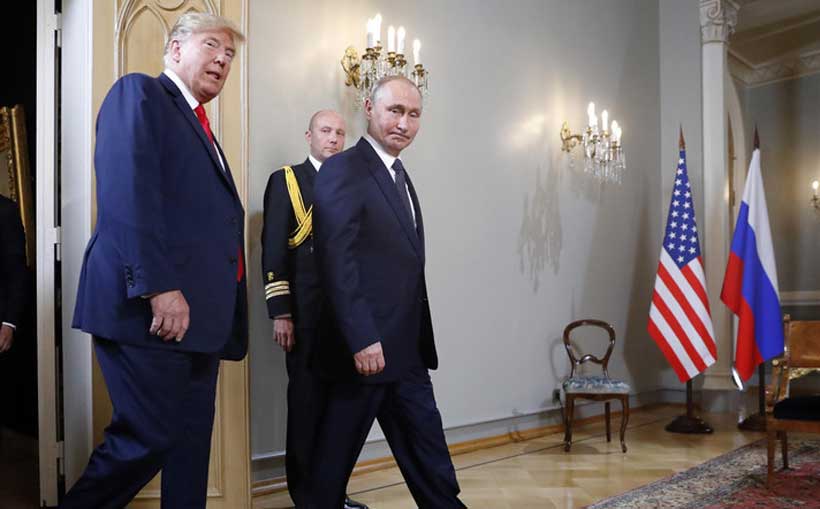Throughout history, nations have navigated familiar diplomatic crossroads, responding to cycles of rivalry, negotiation, and power struggles. Beyond the Cold War, precedents such as the Treaty of Westphalia (1648), the Congress of Vienna (1815), and the U.S.-China détente in the 1970s highlight how diplomacy evolves yet follows recognizable patterns. While circumstances change, strategic imperatives often remain constant. In May 1972, U.S. President Richard Nixon traveled to Moscow at the height of the Cold War, seeking to manage tensions with the Soviet Union. His visit was pivotal, occurring amid the Vietnam War, the Sino-Soviet split, and an overarching ideological contest. More than five decades later, in February 2025, the world watches as the U.S. and Russia engage in high-stakes diplomatic talks to address the Ukraine war, economic sanctions, and broader security concerns in Europe and beyond. Yet, the world of 2025 is markedly different from Nixon’s era—more multipolar, economically interdependent, and shaped by new forms of rivalry beyond traditional military power.
Balancing Rival Powers
When Nixon arrived in Moscow, the Cold War rivalry was at its peak. The U.S. was entangled in Vietnam, facing Soviet and Chinese-backed North Vietnamese forces. Nixon’s primary objective was to secure Soviet cooperation in limiting the arms race and pressuring North Vietnam toward a peace settlement. However, his broader strategy was more complex—he had already transformed U.S.-China relations by visiting Beijing in February 1972, exploiting the deepening Sino-Soviet split. This forced Moscow into a more accommodating position, leading to the Strategic Arms Limitation Treaty (SALT I) and the Anti-Ballistic Missile (ABM) Treaty.
In 2025, the U.S. faces a different kind of diplomatic challenge. Unlike in 1972, China and Russia are now strategic partners, not rivals. The U.S. must navigate a global landscape where Russia is economically dependent on China. While tensions exist within the Russia-China alliance—especially regarding economic dominance and influence in Central Asia—any attempt to weaken their partnership requires a nuanced approach beyond Cold War-style diplomacy.
Managing Conflict Through Diplomacy
In 1972, Nixon’s visit to Moscow aimed to secure Soviet cooperation in ending U.S. involvement in Vietnam while stabilizing superpower relations. His success in arms control agreements demonstrated how diplomacy could de-escalate Cold War tensions, even if temporarily.
Fast forward to 2025, and the Ukraine war presents an even more complicated landscape. Unlike Vietnam, where Nixon sought an exit strategy, the U.S. in 2025 is committed to supporting Ukraine while managing a precarious global balance. The key diplomatic question is whether Washington can negotiate de-escalation without appearing to weaken its stance against Russian aggression.
The Role of Third-Party Influence
India played a minor role in Nixon’s Cold War diplomacy, largely aligning with the Soviet Union following the 1971 Indo-Pakistani War. However, by 2025, India has become a significant geopolitical actor, balancing relations between the U.S., Russia, and China. Prime Minister Narendra Modi’s visit to Washington ahead of the U.S.-Russia talks underscores India’s evolving role.
Despite its growing influence, India’s position as a mediator remains uncertain. While it maintains strong ties with both the West and Russia, the entrenched nature of the Ukraine conflict limits the scope for neutral intervention. However, India’s economic partnerships and diplomatic balancing act position it as a key player in shaping global stability.
Economic Pressures and Diplomacy
Economic factors play a far greater role in 2025 than they did in 1972. While Nixon’s diplomacy revolved around military power and ideological competition, today’s global order is defined by economic interdependence. Western sanctions have isolated Russia from global financial systems, but Moscow has pivoted toward China, India, and other non-Western markets to sustain its economy. The U.S. must navigate these complexities, balancing economic pressures with security concerns while managing alliances that rely on Russian resources.
Energy politics further complicates the situation. Russia remains a major supplier of oil and gas to non-Western nations, limiting the effectiveness of U.S. sanctions. Any diplomatic breakthrough in 2025 would likely require addressing these economic realities, including reassessing sanctions, energy dependencies, and global trade shifts.
Lessons for 2025: Moving Beyond Cold War Playbooks
Nixon’s 1972 visit to Moscow did not permanently end U.S.-Soviet tensions. By the late 1970s, Cold War hostilities reignited, culminating in conflicts such as the Soviet invasion of Afghanistan (1979). Similarly, while the 2025 U.S.-Russia talks might offer a temporary diplomatic reset, long-term peace remains uncertain.
The key difference today is the absence of clear-cut Cold War blocs. The U.S. cannot rely solely on bilateral engagement with Russia to achieve a breakthrough. A successful strategy requires strengthening alliances with European and Indo-Pacific partners, addressing economic dependencies that bind Russia to China, and adapting to the realities of a multipolar world.
Conclusion: Recognizing Diplomatic Parallels Without Repeating Mistakes
History may not repeat itself exactly, but its patterns are clear. The 1972 and 2025 U.S.-Russia engagements reveal the enduring importance of strategic diplomacy, the shifting balance of global power, and the role of third-party actors in shaping outcomes. While Nixon leveraged Cold War rivalries to broker agreements, today’s world is defined by economic interdependence, multipolar competition, and complex alliances. Recognizing these patterns helps frame the 2025 negotiations within broader historical lessons, offering insights into the possibilities and limitations of diplomacy.
The key lesson from Nixon’s diplomacy is that engagements can shape events but rarely eliminate long-term rivalries. For the U.S. to navigate today’s complex global landscape, it must move beyond Cold War-era diplomatic playbooks and develop a strategy that acknowledges the realities of economic interdependence, regional power shifts, and multipolar competition. Whether the 2025 talks lead to a more stable global order or merely a temporary pause before new tensions emerge remains to be seen.
